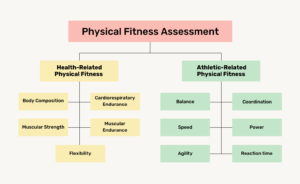What is Creatine?
Creatine is a naturally occurring amino acid-like compound found predominantly in the muscles (about 95% of it), with a small amount of it (about 5% of it) in the brain and testes. Approximately 66% of the creatine in the muscle is phosphocreatine (PCr), whereas the remaining amount is free creatine.
It’s reported that creatine improves performance, builds lean body mass, lowers injury rates, makes it easier to handle more intense training, and is safe when taken in the recommended amounts.
Creatine could be, in fact, one of the most extensively researched sports nutrition products on the market. Its most common method of consumption is to add creatine as a powder to a drink or take it in capsule form, which is another popular way.
Creatine, which is derived from the amino acids arginine, glycine, and methionine, is found in meat and fish, and can also be made in the kidney, liver, and pancreas. It combines with phosphorus to form phosphocreatine (PCr). Phosphocreatine acts as a storage depot for adenosine triphosphate (ATP) during short-term, high-intensity sports like sprinting, and Olympic lifting which can quickly deplete ATP levels.
Adenosine triphosphate (ATP), at the cellular level, is the source of energy that can be used and stored. The energy for all-out maximal effort exercise lasting up to 6 seconds (average length of activity for strength and power) is predominantly derived from the muscle’s limited ATP reserves. Because ATP cannot be stored in excessive amounts within the muscle and is rapidly depleted during bouts of exhausting or high-intensity activity, phosphocreatine availability in the muscles is critical in energy production.
The body breaks down about 1 to 2% (about 2 g) of the creatine pool per day into creatinine in the muscle and then excretes it in the urine.
Creatine dosage and protocol
It’s believed that athletes who saturate their muscles with creatine can improve their ability to retain ATP and delay fatigue during high-intensity activity.
The typical creatine supplementation dose is divided into two phases: loading and maintenance. A typical loading phase consists of 20 g of creatine (or 0.3 g/kg body weight) divided four times a day for two to seven days, followed by a maintenance dosage of 2 to 5 g daily (or 0.03 g/kg body weight) for many weeks to months.
For example, if the goal is to take 10 g per day, individual doses should be 2.5 g four times daily.
It’s said that loading with creatine monohydrate (CrM), the supplement version of creatine, at a rate of 20 g per day for 5 to 7 days can raise muscle PCr levels by up to 50%. With this quantity of ingestion, creatine storage approaches the theoretical top limit of 160 millimoles per kilogramme of dry muscle.
Another alternative supplementation protocol is to ingest 3 g per day of creatine monohydrate for 28 days. This method may result in a gradual increase in muscle creatine stores compared with the more rapid loading method.
Theoretically, it takes 4–6 weeks for elevated creatine stores to return to baseline. For this reason, some people also cycle on and off creatine by taking loading doses of creatine monohydrate for 3 to 5 days every 3 to 4 weeks during training. This method would be effective in increasing and maintaining elevated creatine stores over time.
There is also evidence that the muscles are full of creatine after five days of taking creatine supplementation every day. Thus, you should not take creatine for longer than 5 days and then stop taking it for another 5 days. Even if you just take creatine supplementation five days a month, it may be enough to keep your muscles full.
It’s worth noting that smaller people should use smaller daily doses. And creatine storage in muscle causes the retention of water, with a concomitant increase in weight.
Benefits and effects of creatine supplementation
One of the most obvious effects of taking creatine supplements is that your body mass grows. Yet, for people who are interested in strength and power, an increase in body mass will only provide benefits if the weight gain is in the form of lean body mass.
It has been said that increasing the amount of creatine and PCr in the muscles can have a number of effects on how the body responds to exercise and training. It might help keep energy levels up during high-intensity workouts like HIIT, sprints, and heavy weightlifting. It may also help speed recovery between such vigorous exercises. These adaptations will allow a person to do more work in an exercise session.
Some research indicates that aerobic or endurance capacity may also benefit from creatine supplements. In fact, these studies suggest that loading up on creatine before carbohydrate loading promotes greater glycogen retention. Also, studies indicate that ingesting creatine with carbs during carb loading promotes greater creatine and glycogen retention. This theoretically improves glycogen availability for endurance.
Studies also found that creatine supplementation may help maintain body weight and muscle mass during training. So this could be good news for those who have difficulty maintaining body mass during aerobic training.
To summarise, 95% of the research on creatine supplementation indicates that taking creatine will increase your exercise performance. The average performance improvement ranges from 10% to 15%.
Creatine and Diet
Creatine can be made in our cells from three amino acids, but we can also get it from meat. On the other hand, normal cooking can easily change the structure of this simple polypeptide and lower the amount of preformed creatine in foods. Therefore, well-done meats retain relatively little preformed creatine content.
People who work out hard should take creatine in the form of creatine monohydrate (CrM) on a regular basis to make up for the uneven amounts they get from food alone. Research has shown that CrM can make a small but noticeable difference in high-intensity sports performance.
Some studies reported that vegetarians have lower than normal muscle creatine stores. Moreover, there are some people who have been found to have creatine synthesis deficiencies and should depend on dietary creatine intake to maintain the normal amount.
The Bottom Line
The long-term safety of creatine monohydrate supplementation has never been fully tested on children, adolescents, or adults. Also, there is no solid proof that creatine supplements are bad for healthy adults, and we don’t know if they are safe for children to take for long periods of time.
A person must decide whether or not creatine supplementation is right for them. Before considering creatine supplementation, a person should ensure that an adequate level of energy (calories) is being consumed. If not, simply increasing energy consumption may be enough to boost your performance and results.
Weight gain is the only side effect that has been found to be clinically significant. Still, there are many anecdotal reports of side effects like dehydration, cramping, kidney and liver damage, musculoskeletal injury, stomach pain, and anterior compartment syndrome.
“However, the large number of studies that have been done on creatine monohydrate supplementation and found positive results lead us to believe that it is the most effective nutritional supplement available today for building lean mass and increasing high-intensity exercise capacity,” a position statement added.





